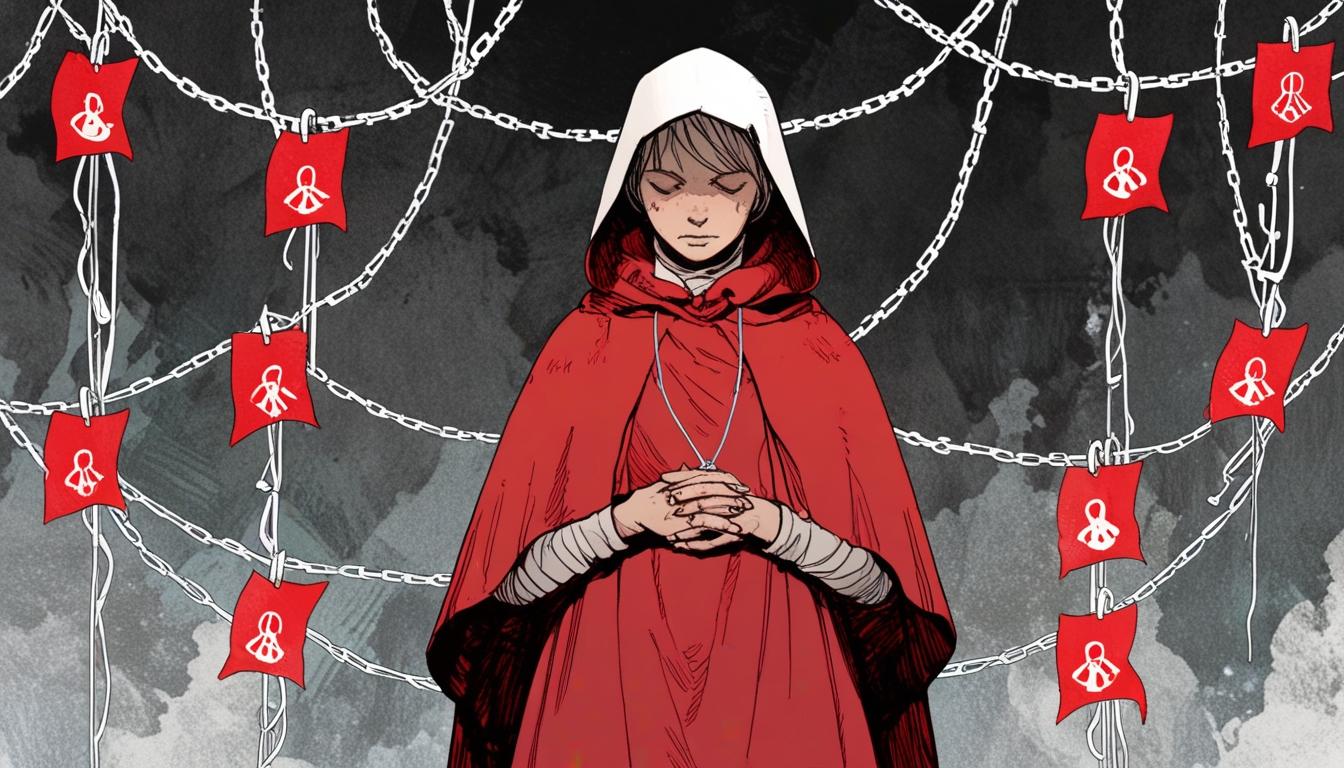The Handmaid's Tale: A Reflection on Contemporary Society and Women's Rights
As The Handmaid's Tale returns for its sixth and final season, new research reveals a striking sentiment among British adults—more than half believe the current political environment closely resembles the nightmarish realities depicted in the acclaimed series. Adapted from Margaret Atwood's 1985 novel, the show illustrates a dystopian society where women are subjugated and reduced to their reproductive capacities in a totalitarian regime. Since its premiere in 2017, shortly after Donald Trump took office, the series has resonated with audiences in ways that seem almost prophetic as contemporary events unfold.
The latest study commissioned by Channel 4 shows that 56% of Britons see parallels between modern societal challenges and the oppressive conditions faced by women in Gilead, Atwood’s fictional realm. Alarmingly, 47% of respondents also believe that women’s rights are not adequately protected in today's political landscape. Concerns voiced by the public echo sentiments shared by many commentators and activists, who suggest that systemic and cultural misogyny has prevented meaningful progress on issues like reproductive rights and gender-based violence.
Indeed, the escalation of violence against women has become an urgent topic in the UK. A staggering one million violent crimes against women and girls were recorded by police in England and Wales for the year 2022/23, constituting nearly 20% of all reported crime—excluding fraud. These figures only serve to corroborate claims made by activists who deem the situation a "national emergency.” Recent government strategies aimed at combatting violence against women have come under scrutiny, labelled a failure by various watchdogs who assert that victims have not experienced improved outcomes in light of rising incidents.
Amber Kirby, Director of Marketing at Channel 4, maintains that the series serves as a “rallying cry against oppression,” aiming to spark vital conversations around the multifaceted challenges women face today. This sentiment resonates with the themes explored in the show, as the creators emphasise how The Handmaid’s Tale acts as a cautionary tale about the erosion of rights. As showrunner Eric Tuchman reflected, the narrative has unfurled in a way that reveals how rights may slip away from those who are least able to defend them. “Women in our country have fewer rights now than when we started production in 2016,” he explained to ex-CNN reporter Oliver Darcy.
The show’s return comes amidst heightened debates surrounding reproductive rights in the US, particularly following the Supreme Court's decision to overturn Roe v. Wade. Individual states have since implemented stringent restrictions, with 13 states currently enacting bans on abortion. This political climate, characterised by aggressive legislative actions, has resulted in intensified fears over women’s autonomy and healthcare.
The juxtaposition of The Handmaid's Tale with current events serves as an uncomfortable reminder of the fragility of rights that many once took for granted. As the public increasingly feels the weight of these societal challenges, recent discussions highlight a broader sense of political disenfranchisement among women. Many are voicing feelings of political homelessness, frustrated by mainstream parties’ failure to fully address gender equity and women's rights—a concern echoed in various circles of activism and private discourse.
While the progress towards gender equality continues to be alarmingly slow, the reflections sparked by The Handmaid's Tale serve to galvanise a collective audience. It brings to light ongoing struggles that necessitate urgent policy interventions across multiple facets of society—not just in the UK, but globally. As viewers embark on this final chapter of the series, they are prompted to consider: how close are we to the extremes depicted in fiction, and what can be done to safeguard against these very realities?
Reference Map:
- Paragraph 1 – [1], [2]
- Paragraph 2 – [1], [2]
- Paragraph 3 – [1], [4]
- Paragraph 4 – [1], [6]
- Paragraph 5 – [1], [3]
- Paragraph 6 – [1], [5]
- Paragraph 7 – [1], [4]
Source: Noah Wire Services
